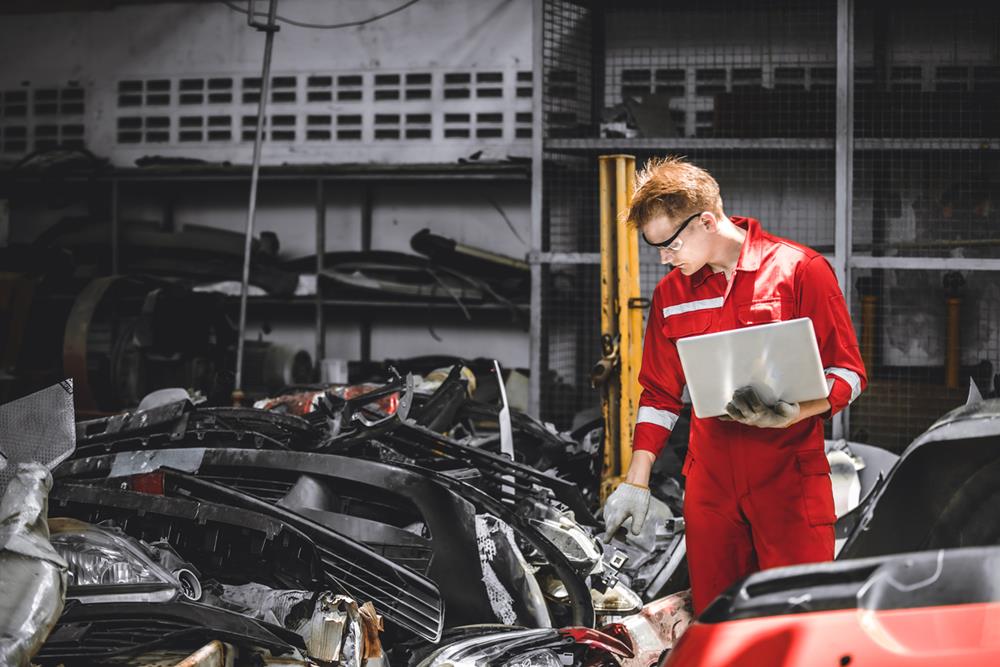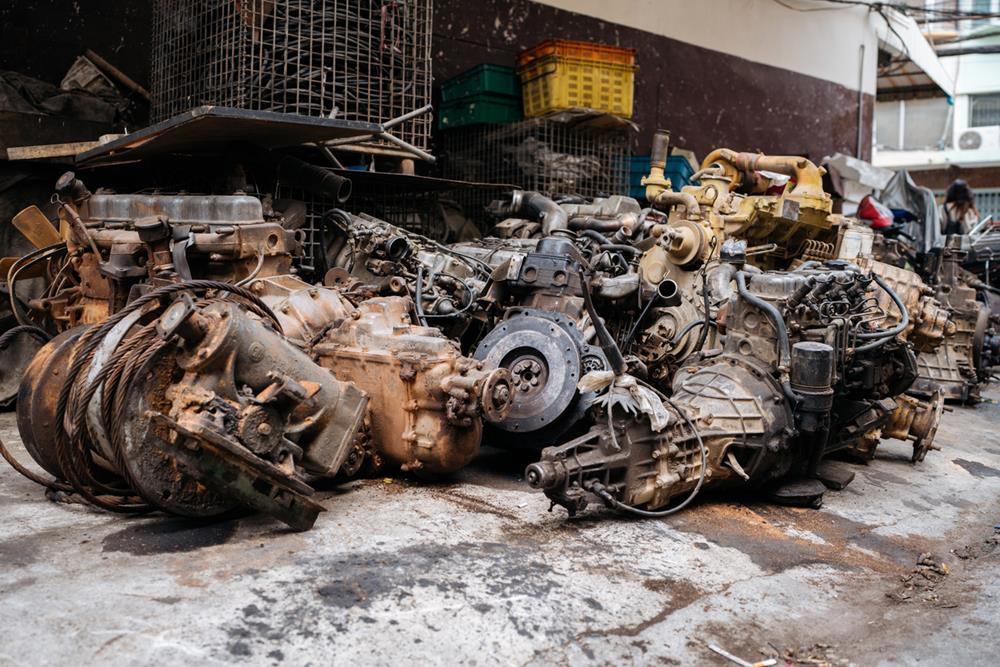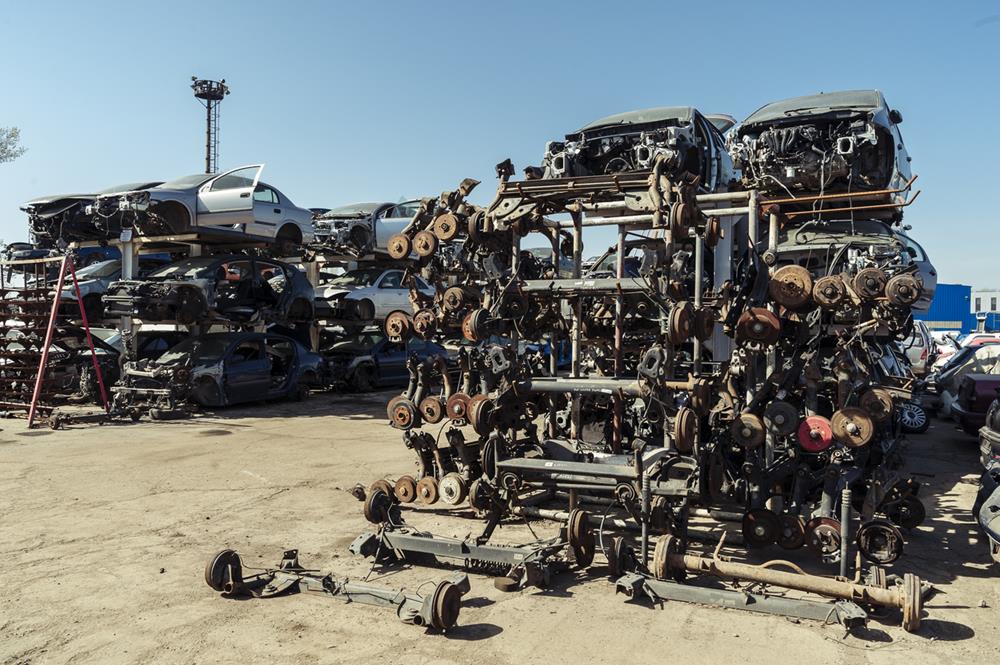Finding the right parts for your car can be tough and expensive. A place some people look for parts is a junkyard. Junkyards, or salvage yards, are like big outdoor stores for car parts that come from old or broken cars. In this article, we’re going to talk about why getting car parts from a junkyard can be a good idea and why it might not be.
We’ll look at how it can save you money, help the planet by recycling, and sometimes find rare parts for older cars. But we’ll also talk about the downsides, like parts not always being in the best shape, taking a lot of time to find what you need, and not having any guarantee that the parts will work well.
Pros of Getting Auto Parts from a Junkyard
Getting auto parts from a junkyard can offer several benefits, particularly for car enthusiasts, DIY mechanics, and those looking to save money on car repairs. Here are some of the key advantages:
- Cost Savings: One of the most significant benefits of sourcing parts from a junkyard is the potential for cost savings. Auto parts from a junkyard can be substantially cheaper than buying new parts. This is particularly advantageous for older cars where new parts may be more expensive or harder to find.
- Environmental Benefits: Choosing to use recycled auto parts from a junkyard is environmentally friendly. It helps reduce the demand for new parts, which in turn minimizes manufacturing impacts on the environment. Additionally, it contributes to recycling efforts by giving new life to parts that would otherwise be left to rust. Unbeknownst to most, the engine is one of the most valuable parts of a junk car that can be recycled, as a large fraction of its structure is composed of recyclable aluminum.
- Rare and Discontinued Parts: For those with vintage or rare cars, junkyards can be treasure troves. They often have parts that are no longer in production or are hard to find through conventional retailers. This makes junkyards essential for restoration projects or maintaining classic cars.
- Self-Serve Options: Many junkyards operate on a self-serve basis, allowing customers to remove parts themselves. This not only reduces costs further but provides a hands-on experience for DIY enthusiasts. It’s an opportunity to learn more about car mechanics and the inner workings of vehicles.
- Community and Support: Junkyards can be centers of community and expertise. Staff and fellow customers can offer valuable advice on how to remove and install parts, as well as tips on which models might have compatible parts for your vehicle.
- Variety of Options: Junkyards typically have a wide variety of cars, increasing the chances of finding the exact part you need. From engines and transmissions to smaller components like mirrors or tail lights, the diversity is significant.
- Supports Local Businesses: By purchasing from local junkyards, you’re supporting local businesses and the local economy. This can help sustain jobs and services within your community.
While there are many benefits to getting auto parts from a junkyard, it’s important to approach with caution, inspect parts carefully, and be prepared for the possibility that some parts may not work as expected. However, for many, the advantages outweigh the potential downsides, making junkyards a valuable resource for auto parts.
Cons of Getting Auto Parts from a Junkyard
While there are several benefits to sourcing auto parts from a junkyard, there are also some drawbacks to consider. Here are some of the cons associated with getting auto parts from a junkyard:
- Condition and Reliability: The biggest drawback is the uncertainty about the condition and reliability of parts. Since these parts are used and have been exposed to the elements, they may be worn out or damaged. There’s always a risk that the part may not function as well as a new one or might fail shortly after installation.
- Lack of Warranty: Most junkyard parts come with little to no warranty. If a part fails or doesn’t fit your needs, you might not be able to return it for a refund or exchange, leaving you out of pocket.
- Time-Consuming: Finding the right part in a junkyard can be time-consuming. You may need to visit multiple junkyards or search through large piles of parts to find what you’re looking for, which can be particularly challenging if you’re in a hurry to repair your vehicle.
- Compatibility Issues: There’s a risk of compatibility issues, especially if you’re not entirely sure of the part’s origin or if it’s from a different model or make than your vehicle. This can lead to wasted time and money if the part doesn’t fit or work correctly in your car.
- No History: When you buy a part from a junkyard, you typically won’t know its history, such as how many miles it has on it or whether it was properly maintained. This uncertainty can affect the longevity and performance of the part.
- Physical Effort: Removing parts from junked cars can require significant physical effort and the right tools. It can also be dirty work, potentially leading to cuts or other injuries if you’re not careful.
- Environmental Concerns: While buying used parts is generally seen as environmentally friendly, not all junkyards practice environmentally responsible dismantling and disposal of vehicles. Hazardous materials from cars, if not handled correctly, can harm the environment.
- Hidden Costs: The initial low cost of a junkyard part might be appealing, but there can be hidden costs. For example, if the part fails shortly after installation, you might have to pay for another part and additional labor costs for reinstallation.
Considering these drawbacks, it’s essential to weigh the pros and cons based on your specific needs, abilities, and the level of risk you’re willing to accept when getting auto parts from a junkyard.
Tips When Getting Auto Parts from a Junkyard
When getting auto parts from a junkyard, a few tips can help ensure that you get the best possible parts for your money and effort. Here’s how to make the most out of your junkyard visits:
- Know What You Need: Before heading to the junkyard, make sure you know exactly what part(s) you need. Check your vehicle’s manual or online forums for specifics about the part and whether other models might have compatible parts.
- Bring the Right Tools: Junkyards usually require you to remove the parts yourself. Bring a toolkit with essentials like wrenches, screwdrivers, pliers, and any specialty tools your vehicle might require. A flashlight or headlamp can also be very helpful.
- Wear Appropriate Clothing: Wear old, comfortable clothing that you don’t mind getting dirty. Sturdy shoes or boots, gloves, and protective eyewear are also important to protect yourself from sharp, rusty parts and other hazards.
- Check for Warranties or Return Policies: Some junkyards offer limited warranties or return policies on parts. Ask about this upfront so you know your options if the part doesn’t work out.
- Inspect Parts Carefully: Look over parts carefully for any signs of wear, damage, or corrosion. This can save you time and money by avoiding parts that are likely to fail soon.
- Consider Bringing the Old Part: If possible, bring the old part with you. This can help in making sure you get a matching replacement, especially with parts where small differences can be critical.
- Ask for Advice: Don’t hesitate to ask the junkyard staff or other customers for advice. They can often offer valuable insights on where to find what you need or how to remove a part more easily.
- Take Your Time: Don’t rush. Give yourself plenty of time to find and carefully remove the part you need. Rushing can lead to mistakes, such as damaging the part you’re trying to salvage or even injuring yourself.
- Know the Market Value: Having an idea of what the part costs new or refurbished can help you negotiate better if prices aren’t fixed. It also ensures you don’t overpay for a used part.
- Be Prepared for the Hunt: Sometimes, finding the right part requires visiting multiple junkyards or coming back another day. Be patient and prepared for the search.
- Environmental Considerations: Choose environmentally responsible junkyards, when possible, ones that follow proper disposal methods for hazardous materials.
- Verify Compatibility: Double-check part numbers if possible or use online databases to ensure the part you’re taking is indeed compatible with your vehicle.
By following these tips, you can make your junkyard part hunting more productive, safe, and cost-effective.
Conclusion
Getting auto parts from a junkyard can be a great way to save money and find rare parts for your car. However, it’s important to go in prepared. Knowing what you need, wearing the right gear, and taking your time to inspect parts carefully can make all the difference. Remember, while there are treasures to be found, patience and diligence are your best tools.
Additional Tip
- For those hoping to debunk common junkyard stereotypes, visit top-of-the-line junkyards like Tear-a-Part and witness their wide selection of used car parts firsthand.




